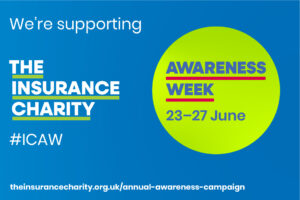Stay Informed with News and Insights
Explore the latest updates, expert opinions, and industry trends to keep you ahead.
News
Keep up to date with the latest news, expert insights, and industry developments.

The Insurance Charity – Our Dedicated Industry Charity
Learn about the Insurance Charity Awareness Week 2025 and how this essential organisation supports UK and Irish insurance professionals facing financial difficulties. Discover eligibility, support options, and ways to get involved. #ICAW

Specialist Efficacy Cover: A Solution for Your High-Value Security & Electrical Clients
When high-value electrical and security systems fail to perform as intended, the potential liability for your premium clients can reach millions—far beyond what standard market capacity provides. BLW’s exclusive London Market efficacy cover through Chaucer delivers the comprehensive protection your £10,000+ GWP clients need, with specialist capacity that standard facilities simply cannot match.

Insurance for Temporary Structures
From pop-up film studios to glamping pods, temporary structures represent millions in investment but create unique insurance challenges that standard commercial policies can’t address. BLW’s exclusive Entertainment and Leisure wording provides comprehensive coverage specifically designed for the mobile, seasonal nature of these sophisticated modular installations.

The Value of Independence in a Consolidating Market
BLW Insurance Brokers CEO Brett Sainty discusses the value of independent brokers, their heritage expertise, market trends, and balancing technology with personal service.

BIBA 2025 Manifesto Launch: Partnering to Deliver Value
Discover BIBA’s 2025 Manifesto, outlining key initiatives, regulatory reforms, and industry collaboration to support growth, tackle emerging risks, and enhance the role of insurance brokers in a changing market.

Alarminsure – Specialist Insurance for Security Installers & Electrical Contractors
Discover how Alarminsure simplifies insurance for security and electrical contractors, offering tailored cover, expert advice, and peace of mind to keep your business protected.

The Interview: Meet The Dynamic Duo Shaping the Insurance Industry for Three Decades
Learn how Brett Sainty and Sandy Brownlee’s 25-year partnership has shaped customer-first insurance, built on shared values, expert leadership, and a commitment to exceptional service.

The Insurance Charities – Our Dedicated Industry Charity
Find out how The Insurance Charities provides vital support to insurance professionals and their families, and how you can make a difference during Insurance Charities Awareness Week.